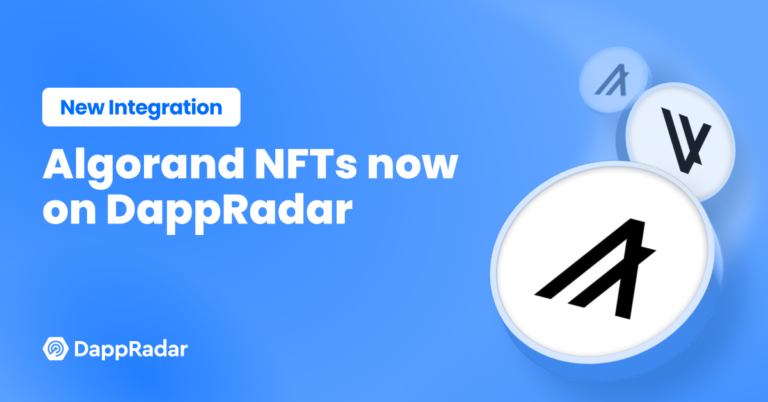Introduction
Lending platforms are an integral part of the DeFi infrastructure as protocols like Aave, Compound and MakerDAO have locked up over $13 billion in combined TVL. However, the market continues to be dominated by a process where users must deposit collateral in order to borrow funds which often introduce unnecessary friction and limit potential growth for both the borrowers and lenders. There is an overwhelming opportunity for uncollateralized loans to yield even higher than collateralized loans as institutional lending becomes one of the fastest growing segments in DeFi. Despite the fact that uncollateralized loans may imply higher credit risk than its collateralized counterparts there are several platforms that have come to market to address these concerns and satisfy institutional demand.
Overview
Atlendis addresses capital inefficiencies in the DeFi lending market by enabling uncollateralized crypto loans for institutional borrowers while offering lenders attractive returns and flexibility in managing their risk. Uncollateralized loans offer similar function and act as a revolving line of credit to institutional borrowers, a solution often offered to businesses by banks in traditional finance. Institutional borrowers which include dApps, protocols and DAOs benefit significantly from the protocol since there are no collateralization requirements. This approach significantly frees up their funds while also allowing lenders to obtain better rates. Despite these benefits, uncollateralized loans imply higher credit risk than its collateralized counterparts therefore borrowers on Atlendis will need to go through a credit scoring process to become whitelisted when seeking a loan. Once approved, the protocol will open a borrower specific pool parameterized according to their needs to get automatically paired with the lenders. The pairing happens through a bid order book where the borrower ends up as the price taker of the fixed lending term that is primarily set by the lender. Every whitelisted borrower would have their own limit order book that is used to determine the borrowing rate which would allow for a fair rate discovery in the market. Once borrowers and lenders are paired and the liquidity pool is set-up using the bid order book the liquidity pool can remain open indefinitely. This would allow the borrower to obtain recurring crypto loans to meet their evolving liquidity needs after each fixed term. Lenders will have the ability to select their borrower and define their own fixed term (e.g. lending rate) through the bid order book as well. This would allow lenders to have better control over their risk profile since they will be able to choose the amount of risk they are willing to take for the level of potential return. Each pool will be composed of no more than one asset that is specified by the borrower. Unlike other platforms, it will not be shared with other borrowers to prevent any dilution that would occur from new deposits that may enter the liquidity pool.
The protocol also plans to spur a wide range of trading possibilities by incorporating NFTs and representing the lender’s position through original artwork. In exchange for the loan the lender would receive an NFT representing the entire position and the underlying assets attached to it. Therefore, if the lender was to sell their NFT the position would be sold and when the position is withdrawn the NFT would be burned.
Liquidity Rewards and Payments
Liquidity rewards are rewarded to lenders (liquidity providers) for providing borrowable liquidity and will be on the portion of capital that is not actively loaned out. Until the lender is matched with a borrower, the lender’s yield is optimized for the idle capital and placed on a trusted third party protocol such as Aave. When the lender is matched up with a borrower and deposits capital into the borrower’s bid order book, the lender will start to earn additional interest on the portion of the capital that is not used at the rate that has been defined by the borrower. Therefore, liquidity providers on the Atlendis protocol are able to earn interest from three primary sources: 1) trusted third party protocol 2) liquidity rewards paid by the borrower on capital that is not actively loaned out and 3) actively lending to borrowers at the chosen lending rate. Similar to zero coupon bonds, the borrower will need to pay back the principal and interest on the used capital upon maturity as no interest is typically paid during the life of the bond. A mechanism to enforce a penalty fee has also been built in to discourage late payments. Additionally, the protocol does not assume they are immune to liquidity risks as it is a possibility that lenders do not offer attractive rates for the borrowers. In such a scenario, the pool would be in a bind and fail to deliver a capital efficient lending platform. In order to address such a possibility, the protocol allows the borrower to set the upper and lower bounds of the lending rates to determine the amount of reward that will be distributed to liquidity providers. The liquidity fees will correspond to the difference between the maximum borrowable amount and the current borrowed amount. Therefore, even if the funds were not actively loaned out, liquidity providers will be at least rewarded for providing borrowable liquidity.
Tokenomics and Mechanism Design
The protocol is undergoing its initial phases and making sure the product finds its product market fit. Therefore there is no governance token as of today however as the protocol looks to decentralize its governance in the future, it can be expected that a governance token will become available for the community to create proposals and vote on them.
Macro View
The market opportunity put forth by uncollateralized lending will be massive as DeFi continues to mature by refining the needs of institutional borrowers including dApps, protocols and DAOs. Lending protocols that continue to chip away at friction while providing more transparency seamlessly through smart contracts will start to represent a larger portion of the DeFi infrastructure. Atlantis has already gained significant traction just several months after launching on Polygon mainnet by issuing more than $2.4 million in loans, attracting 2,700+ lenders, locking $1.4 million in total value and attracting Wintermute, a leading digital assets market maker, as its first borrower with a credit score of AA.
Adopting similar functions from traditional finance such as a revolving line of credit is an example of Atlendis protocol differentiating itself amongst other DeFi lending platforms. The Atlendis protocol is also helping to close the gap with CeFi offerings as other protocols will only offer lending to borrowers that can front some amount as collateral. By offering uncollateralized loans, Atlendis aims to facilitate true borrowing where a participant gets into a position of net debt. Despite the incredible opportunity ahead of Atlendis, the protocol is still in development as it undergoes its first few phases in proving the model. Therefore, there are plenty of risks to consider before participating on the lending platform. Offering lenders the flexibility to manage their own risk profile does not come without risk to those who are unable to assess the perceived risk profile of the investment. Whitelisted borrowers will not guarantee protection from default risk despite the process entailing audited and renowned organizations in the crypto space. Therefore, lenders will have to have a key understanding of the risk they are willing to take for the reward they are seeking. Another possible risk is the placement of unused capital on Aave as any event on the protocol will directly affect the Atlendis protocol and its lenders. Aave’s sources of risk directly affects the Atlendis protocol therefore it would benefit Atlendis and its lenders to diversify the placement of capital across several reputable and safe protocols in future phases. Considering such risks and the massive opportunity for uncollateralized lending, it will be worth monitoring further development of the Atlendis protocol in facilitating true borrowing and closing the gap with CeFi offerings today.
Further Reading and Sources
- https://github.com/Atlendis/whitepaper-v1/blob/main/Atlendis_WhitePaper_V1.pdf
- https://docs.atlendis.io/atlendis-v1/developers/protocol-overview
- https://docs.atlendis.io/atlendis-v1/protocol/risk-management
- https://docs.atlendis.io/atlendis-v1/user-manual/lender/faq
- https://atlendis.io/blog/
- https://medium.com/@Atlendis
Cryptofunds, market makers, and trading desks can interact with EVM based DeFi protocols with MetaMask Institutional
MetaMask Institutional offers unrivalled access to the DeFi ecosystem without compromising on institution-required security, operational efficiency, or compliance. We enable funds to trade, stake, borrow, lend, invest, and interact with over 17,000 DeFi protocols and applications.
Found this research useful? Connect with the ConsenSys Cryptoeconomic Research team at [email protected]
Disclaimer: ConsenSys Software Inc. is not a registered or licensed advisor or broker. This report is for general informational purposes only. It does not constitute or contain any individual investment advice and is made without any regard to the recipient’s objectives, financial situation, or means. It is not an offer to buy or sell, or a solicitation of any offer to buy, any token or other investment, nor is it intended to be used for marketing purposes to anyone in any jurisdiction. ConsenSys does not intend for any person or entity to rely on any facts, opinions, or ideas, and any financial or economic commentary expressed in this report may not be relied upon. ConsenSys makes no representations as to the accuracy, completeness, or timeliness of the information or opinions in this report and, along with its employees, does not assume any responsibility for any loss to any person or entity that may result from any act or omission based upon this report. This report is subject to correction, completion, and amendment without notice; however, ConsenSys has no obligation to do so.






